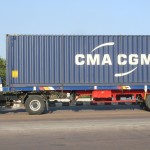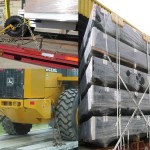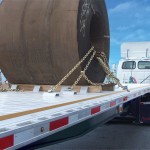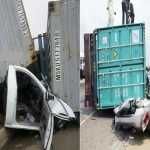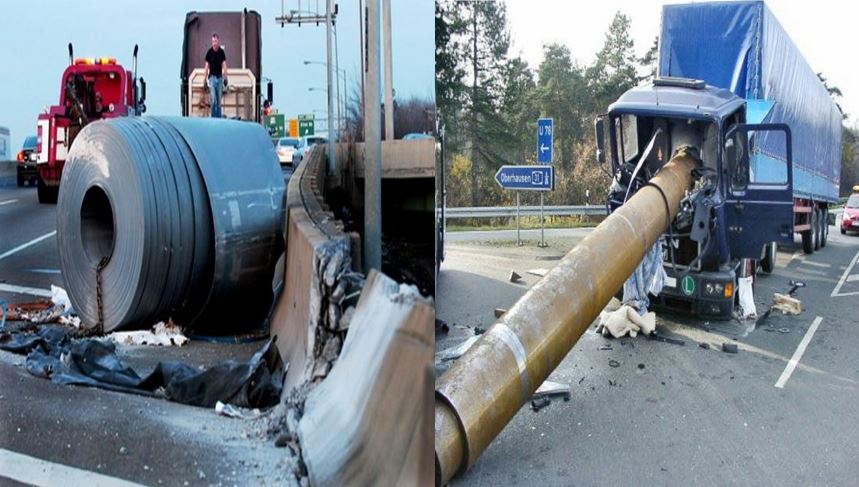

INTRODUCTION
Leaning heavily on the Best Standard Practices for transporting cargo as it obtains in many advanced countries of Europe and States of America where the fear of the law is the beginning of wisdom and where impunity and gross disregard for safety standards have been committed to the dustbin of history, we hereby present to you some of the strategies you can adopt to ensure that your cargo is delivered on time and in good condition.
However, it must be stated that the success or otherwise of these strategies depends more on the will of adoption and a commitment to having it fit perfectly in the SOPs of the haulage companies. We are hopeful many will see the reason for such.
The strategies comprise the following:
Inspecting Cargo
Cargo Weight and Balance
Cargo Needing Special Attention
Securing Cargo
Whether or not you load and secure the cargo yourself, you are responsible for:
Inspecting your cargo
Recognizing overloads and poorly balanced weight
Knowing your cargo is properly secured and does not obscure your view ahead or to the sides.
Knowing your cargo does not restrict your access to emergency equipment.
If you intend to carry hazardous material that requires placards on your vehicle, you will also need to have a hazardous materials endorsement.
INSPECTING YOUR CARGO
As part of your pre-trip inspection, make sure the truck is not overloaded and the cargo is balanced and secured properly.
After Starting- Inspect the cargo and its securing devices again within the first 50 miles after beginning a trip. Make any adjustments needed.
Re-check– Re-check the cargo and securing devices as often as necessary during a trip to keep the load secure. You need to inspect again:
- After you have driven for 3 hours or 150 miles
- After every break you take during driving.
Federal, state, and local regulations for commercial vehicle weight, securing cargo, covering loads, and where you can drive large vehicles vary from place to place. Lagos State for instance, has a restriction on the categories and tonnage of trucks that are permitted on the 3rd Mainland Bridge at any point in time. It pays to know the rule that obtains in where you will be driving.
Weight and Balance
You are responsible for not being overloaded. The following are some definitions of weight you should know.
Definitions You Should Know
Gross Vehicle Weight (GVW) – The total weight of a single vehicle plus its load.
Gross Combination Weight (GCW) – The total weight of a powered unit, plus trailer(s), plus the cargo.
Gross Vehicle Weight Rating (GVWR) – The maximum GVW specified by the manufacturer for a single vehicle plus its load.
Gross Combination Weight Rating (GCWR) – The maximum GCW specified by the manufacturer for a specific combination of vehicles plus its load.
Axle Weight – The weight transmitted to the ground by one axle or one set of axles.
Tyre Load – The maximum safe weight a tire can carry at a specified pressure. This rating is stated on the side of each tire.
Suspension Systems – Suspension systems have a manufacturer’s weight capacity rating.
Coupling Device Capacity – Coupling devices are rated for the maximum weight they can pull and/or carry.
Legal Weight Limits
You must keep weights within legal limits. Some States have maximums for GVWs, GCWs, and axle weights that are permitted to transit on designated routes. Often, maximum axle weights are set by a bridge formula. This is to prevent overloading bridges and roadways.
Overloading can have bad effects on steering, braking, and speed control. Overloaded trucks have to go very slowly on upgrades. Worse, they may gain too much speed on downgrades. Stopping distance increases. Brakes can fail when forced to work too hard.
During bad weather or in mountains, it may not be safe to operate at legal maximum weights. Take this into account before driving.
Don’t Be Top-heavy
The height of the vehicle’s center of gravity is very important for safe handling. A high center of gravity (cargo piled up high or heavy cargo on top) means you are more likely to tip over. It is most dangerous in curves, or if you have to swerve to avoid a hazard. It is very important to distribute the cargo so it is as low as possible. Put the heaviest parts of the cargo under the lightest parts.
Balance the Weight
Poor weight balance can make vehicle handling unsafe. Too much weight on the steering axle can cause hard steering. It can damage the steering axle and tires. Under-loaded front axles (caused by shifting weight too far to the rear) can make the steering axle weight too light to steer safely. Too little weight on the driving axles can cause poor traction. The drive wheels may spin easily. During bad weather, the truck may not be able to keep going. Weight that is loaded so there is a high center of gravity causes greater chance of rollover. On flat bed vehicles, there is also a greater chance that the load will shift to the side or fall off.

